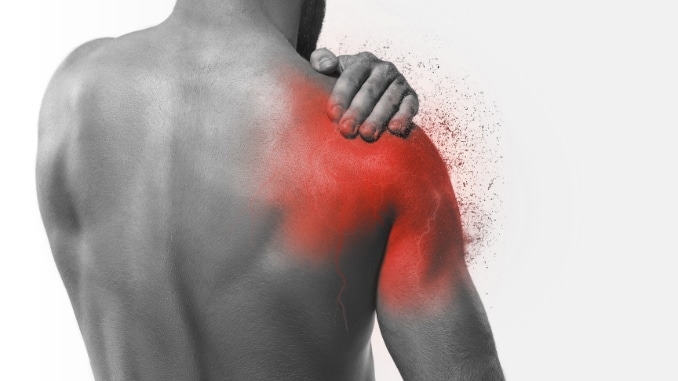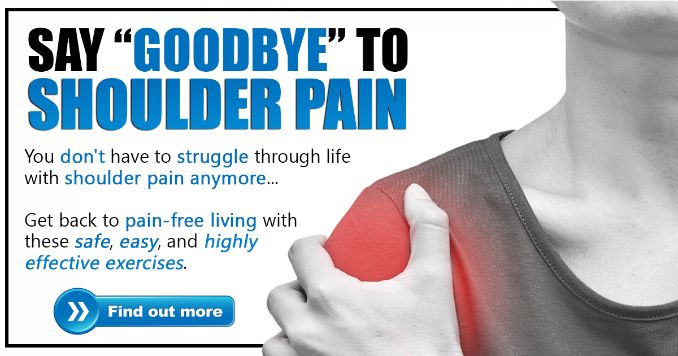Are you experiencing shoulder pain from lifting weights? You’re not alone! Many weightlifters experience shoulder discomfort, often caused by improper lifting technique, muscle imbalances, or overuse injuries. Understanding what’s going on with your shoulder can help you get back to lifting pain-free.
Here are seven effective exercises to help alleviate shoulder pain and strengthen your shoulder muscles:
Warm-Up: Begin with dynamic stretches such as arm circles, shoulder shrugs, and cross-body arm swings to activate the shoulder complex.
1. External Rotation
For this exercise, you need to use resistance tubing.
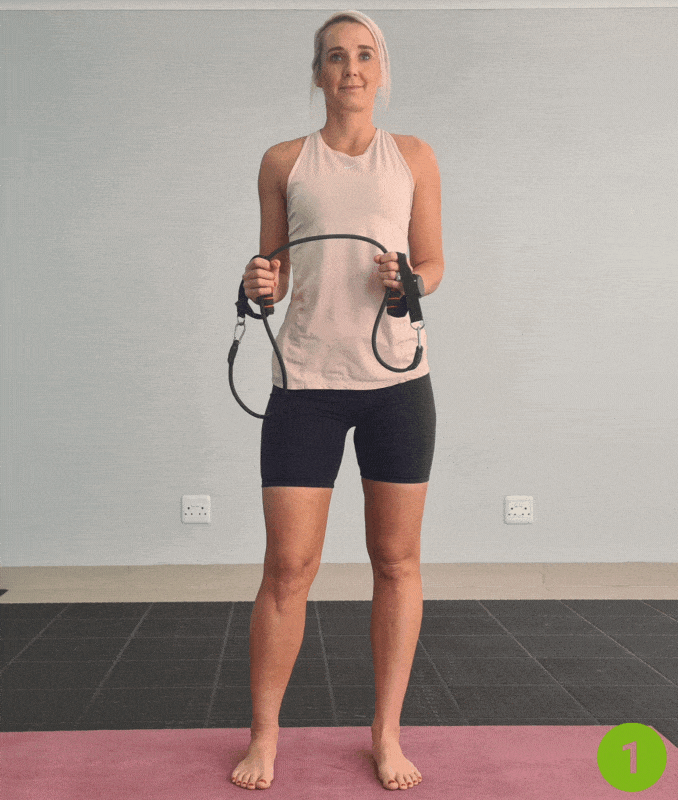
- Begin in an upright standing position with your feet shoulder-width apart.
- Maintain good alignment with your head, shoulders, hips, and legs.
- Hold a resistance band with the handles at your sides, ensuring enough space between your hands for proper stretching.
- Engage your core muscles.
- Pull one arm outward, keeping your elbow bent at 90 degrees and close to your body to create resistance against the band.
- Hold the position for a few seconds.
- Pull back inward to return to the starting position and repeat the movement on the opposite side.
Reps: 3 sets of 10-15 reps each side.
2. Scapular Squeeze
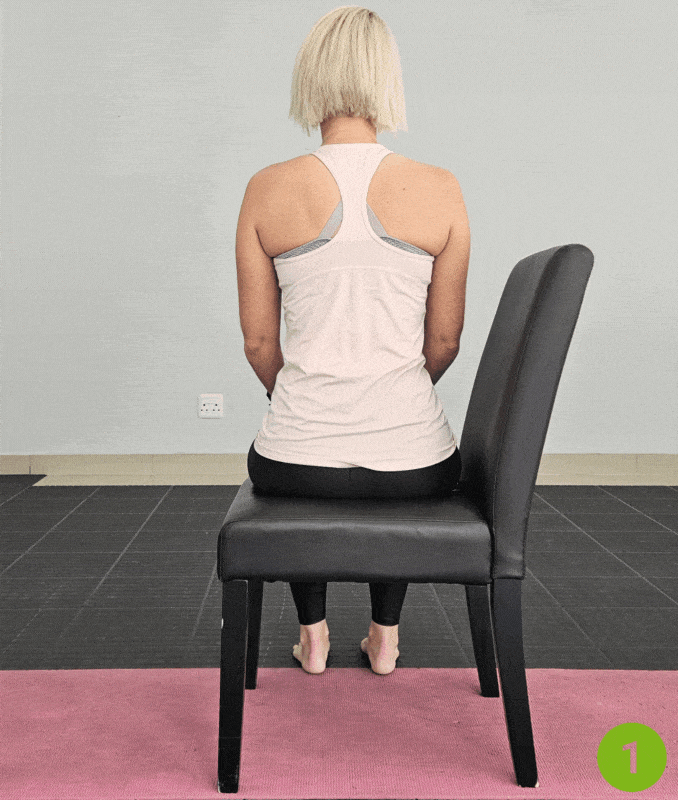
- Begin in an upright sitting position on a chair with your knees bent and feet flat on the floor, with your legs close together.
- Place your hand on top of your thighs.
- Engage your core muscles and squeeze your shoulder blades together.
- Hold the position for several deep belly breaths, in through your nose and out through your mouth.
Reps: 3 sets of 10-12 reps.
3. Wall Angels
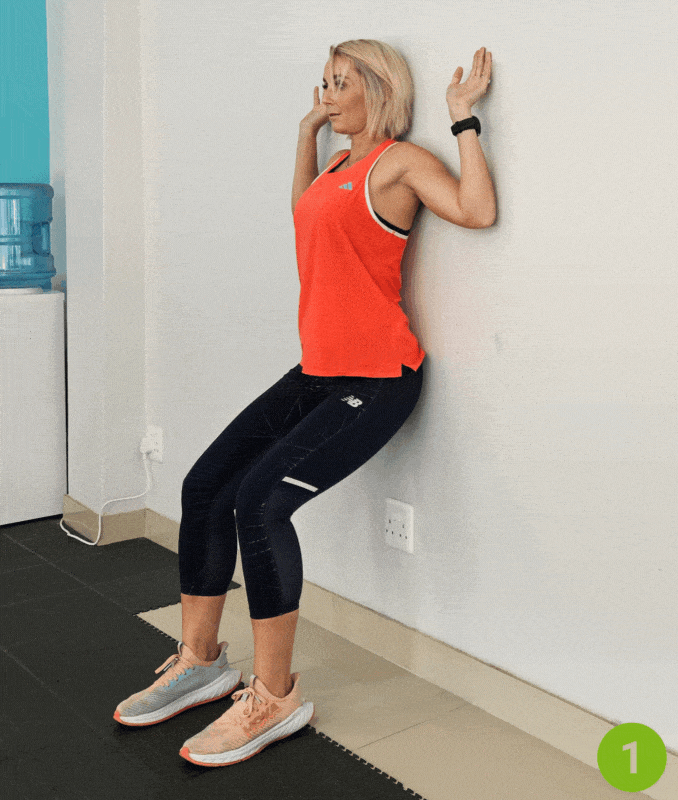
- Begin in an upright standing position with your back against the wall with your feet hip-width apart, maintaining good alignment with your head, shoulders, hips, and legs.
- Move your feet about 6–12 inches away from the wall to increase the angle of your body.
- Engage your core.
- Raise your arms, bending your elbows until your hands are just above your shoulders to form a “W” shape with the backs of your hands against the wall, then slowly slide your arms up, forming a “V” shape.
- Keep your shoulders relaxed and retracted, with your lower back and pelvis gently pressed against the wall.
- Slide your arms back down to the starting position and repeat the movement for 10-15 repetitions for 2–3 sets, resting for 30 seconds between sets.
4. Shoulder Flexion with Dumbbells
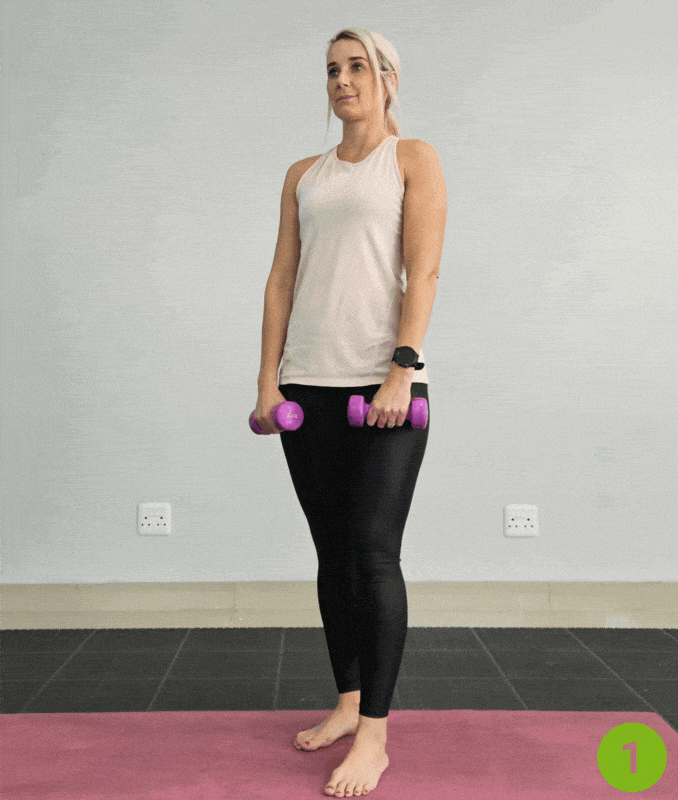
- Begin in an upright standing position with your feet hip-width apart.
- Maintain good alignment with your head, shoulders, hips, and legs.
- Step forward with one foot and hold a dumbbell in each hand.
- Place your hands at your side.
- Engage your core muscles and lift each arm straight in front of you to shoulder height, then lower it back down.
5. Face Pulls
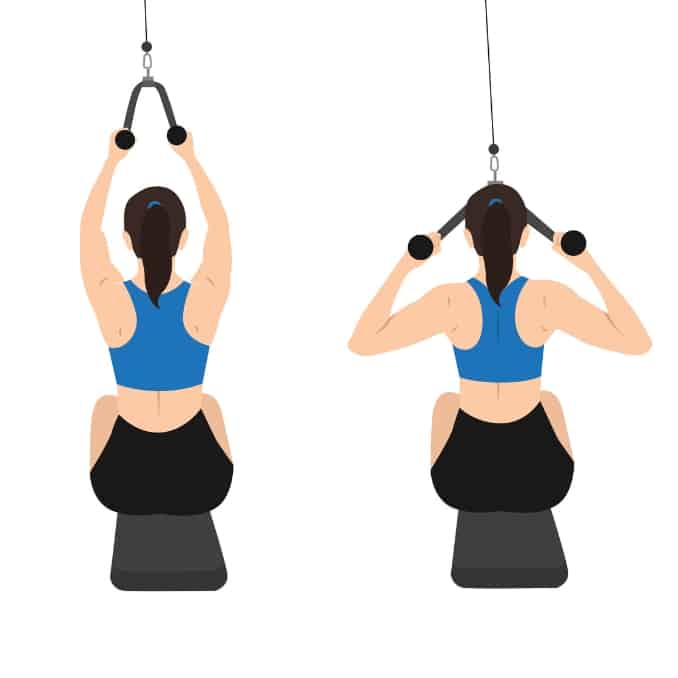
- Begin in an upright sitting position in front of a low pulley machine with a rope attachment.
- Grasp the ends of the rope with an overhand grip. Extend your arms fully at chest level.
- Engage your core muscles.
- Pull the rope towards your face with your elbows flared out, ensuring your shoulders remain down and scapulae retract.
- Your upper arms should be parallel to the floor.
- Hold the position for a few seconds.
- Return to the starting position and repeat the movement.
Reps: 3 sets of 10-15 reps.
6. Plank to Downward Dog
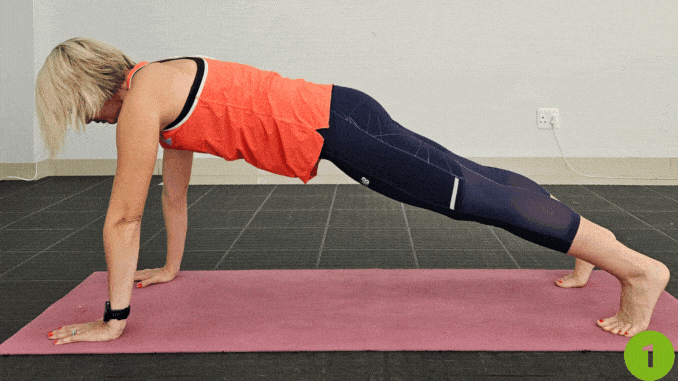
- Begin in a full arm plank position on the floor with your arms beneath your shoulders, legs straight and toes tucked.
- Tighten your abdominal muscles, push back through your arms, keeping your spine neutral as you lift your hips and straighten your legs into an inverted V position.
- Hold the position for several deep belly breaths, in through your nose and out through your mouth.
Reps: 3 sets of 5-10 reps, holding each position for a few seconds.
Shoulder Pain After Deadlifts
One common cause of shoulder pain is performing deadlifts incorrectly. If your form falters, it can strain the shoulder joint and surrounding muscles.
This is particularly true if you overuse your shoulders instead of relying on proper engagement of your legs and core. Always focus on maintaining proper form to prevent injury.
What is a Weightlifter’s Shoulder?
A weightlifter’s shoulder refers to chronic shoulder pain often [1] caused by repetitive overhead lifting. This condition often involves chronic irritation or microtears in the distal clavicle or rotator cuff tendons, leading to pain and inflammation. Recognizing early signs, such as discomfort during shoulder movements, can help prevent further injury.
Dr. James Andrews, an orthopedic surgeon and sports medicine expert, emphasizes the importance of proper technique in preventing shoulder injuries among weightlifters.
He states, “Many shoulder injuries can be avoided by ensuring that lifters maintain proper form and gradually increase their weights. It’s crucial to listen to your body, modify your training routine, and address any discomfort early to prevent progression to serious injuries. This insight highlights the balance between pushing limits in weightlifting and prioritizing shoulder health.
Recognizing Common Shoulder Injuries
Two common shoulder injuries associated with lifting weights are:
- Rotator Cuff Injuries [2]: These involve tears or inflammation of the rotator cuff tendons, leading to pain and weakness.
- Shoulder Impingement: This occurs when the acromion impinges on the rotator cuff tendons during overhead movements, leading to pain and limited mobility.
Both conditions can be exacerbated by improper techniques during weight training.
How to Relieve Shoulder Pain from Lifting Weights
To relieve shoulder pain, consider the following treatment options:
- Physical Therapy: A physical therapist can design a recovery process tailored to your needs, focusing on strengthening and mobility.
- Anti-Inflammatory Medications: Over-the-counter nonsteroidal anti-inflammatory drugs (NSAIDs) can help manage pain and reduce inflammation.
- Corticosteroid Injections: For severe cases, an orthopedic surgeon may recommend injections to alleviate prolonged pain.
- Rest and Recovery: Allow your shoulder time to heal by avoiding repetitive movements that cause discomfort.
The Importance of Proper Techniques
To prevent shoulder injuries, always use proper lifting techniques. Maintain a straight back, engage your core, and ensure your shoulders are not overly strained during exercises like bench presses and shoulder presses.
Remember, your shoulders function as part of a complex kinetic chain involving the scapular [3] stabilizers, rotator cuff, and glenohumeral joint.
Conclusion
Shoulder pain from lifting weights can be frustrating and debilitating. However, with the right approach—incorporating warm-up exercises, recognizing the signs of injury, and focusing on proper techniques—you can maintain shoulder health and strength. Don’t let shoulder discomfort hold you back from reaching your fitness goals!
Tired of living with shoulder pain? It’s time to take action with Shoulder Pain Solved! Discover effective solutions to relieve pain, restore mobility, and get back to doing what you love. Don’t let shoulder pain hold you back—find your solution today and reclaim your comfort!
Frequently Asked Questions
How long does a weightlifter’s shoulder take to heal?
Healing can take anywhere from a few weeks to several months, depending on the severity of the injury and adherence to treatment.
How to get rid of weightlifter’s shoulder?
Rest, physical therapy, ice, anti-inflammatory medications, and proper form during lifting can help alleviate symptoms.
How can I tell if shoulder pain is serious?
Seek medical attention if you experience severe pain, swelling, loss of mobility, or if the pain persists despite rest and self-care.
How long does it take to recover from shoulder pain caused by lifting weights?
Shoulder pain from lifting weights can last from a few days to several weeks, depending on the cause and whether the shoulder is rested properly.
What is the fastest way to recover from a shoulder injury?
Rest, ice, physical therapy, and avoiding activities that aggravate the injury are key for faster recovery.

